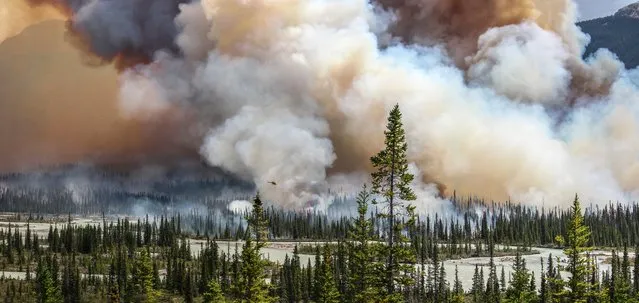
The overall awards winners have been announced in the 2016 Atkins Ciwem environmental photographer of the year competition, an annual international showcase for thought-provoking photography and video that tackles a wide range of environmental themes. The environmental photographer of the year 2016 is awarded to Sara Lindström for her imposing photograph “Wildfire”. Swedish-born Sara picked up photography while studying in South Africa, and is now based in the Canadian Rockies. Her projects have seen her travel across more than 50 countries, capturing the beauty of the more remote corners of the Earth. “It was an exceptionally warm day in July in southern Alberta when I came across this massive pinkish smoke plume rising high towards the sky. The big flames were thriving on the dry land and had me completely mesmerized in fear and awe”. (Photo by Sara Lindström/2016 EPOTY)

Luke Massey is awarded the young environmental photographer of the year 2016 for his bold photograph “Poser”. “Peregrines were extirpated in Illinois in the 1960s but in the 1980s a reintroduction programme began and now 22 pairs nest in Chicago alone”, he explains. “One pair have chosen a Chicagoan’s condo balcony as their nest site and in 2015 I followed them as they raised four chicks to fledging”. Described by naturalist and broadcaster Chris Packham as an “exceptional young man”, Luke dedicates his photographic skills to drawing attention to the plight of wildlife under threat. (Photo by Luke Massey/2016 EPOTY)
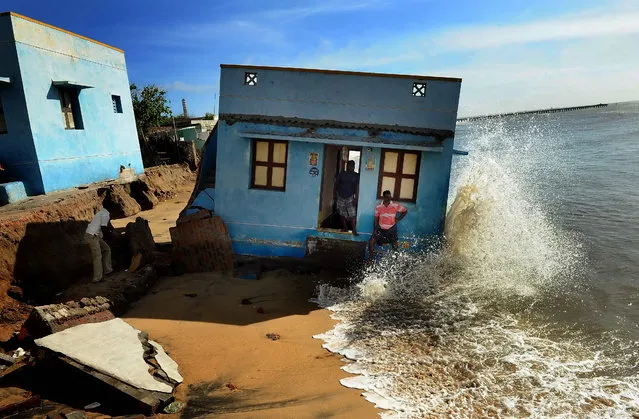
The Atkins built environment award 2016 goes to Indian photojournalist S.L. Kumar Shanth for “Losing Ground to Manmade Disaster”, which depicts the damage being wrought on the coastline at Chennai, the biggest metropolis in southern India, by a combination of man-made and natural forces. (Photo by S.L. Shanth Kumar/2016 EPOTY)

The Ciwem changing climate award 2016 is presented to Sandra Hoyn for her moving photograph “Life Jackets on the Greek Island of Lesbos”. Hoyn, a German photojournalist, concentrates on social, environmental and human rights issues. Her winning photograph depicts the discarded life vests used by refugees to cross to Greece from Turkey, and hints at the enormity of the crises and dangers faced by the refugees. (Photo by Sandra Hoyn/2016 EPOTY)
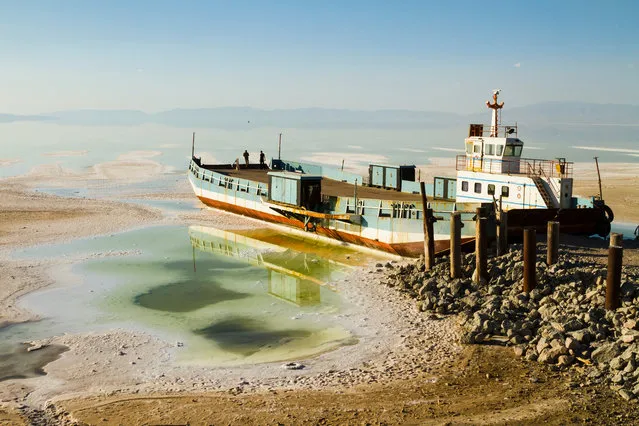
Pedram Yazdani wins the Forestry Commission England people, nature and economy Award 2016 for his arresting work “Sand”. “The Salt Lake Urmia could be a symbol of what will happen soon to Iran – it is going to be dried out”, explains Yazdani. “The biggest salt lake in the Middle East, it now contains only 10% of the original amount of water, as a result both of climate change, and of dam and well construction”. (Photo by Pedram Yazdani/2016 EPOTY)
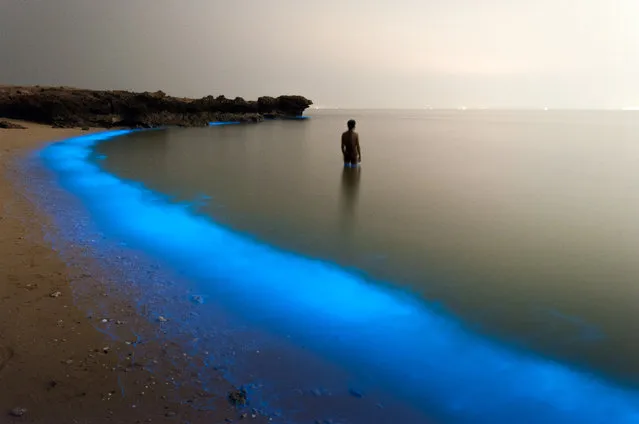
Shortlisted: Pooyan Shadpoor, Houcheraghi. While walking along the shore of Larak, Iran – an island in the Persian Gulf – Shadpoor came across this luminous scene. The “magical lights of (the) plankton ... enchanted me so that I snapped the shot”, he writes. (Photo by Pooyan Shadpoor/2016 EPOTY)
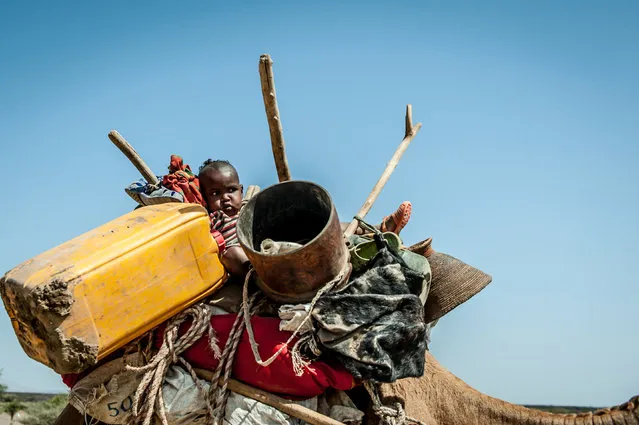
Shortlisted: Jonathan Fontaine. A baby on a camel and his family decided to move their camp of 10km to be closer to a river where there is some water left. Ethiopia is experiencing its worst drought in 50 years as the direct result of El Niño. Some 75% of harvests have been lost, 1 million livestock have died, and 10 to 15 million people require emergency humanitarian food assistance, with 430,000 children experiencing severe malnutrition. (Photo by Jonathan Fontaine/2016 EPOTY)
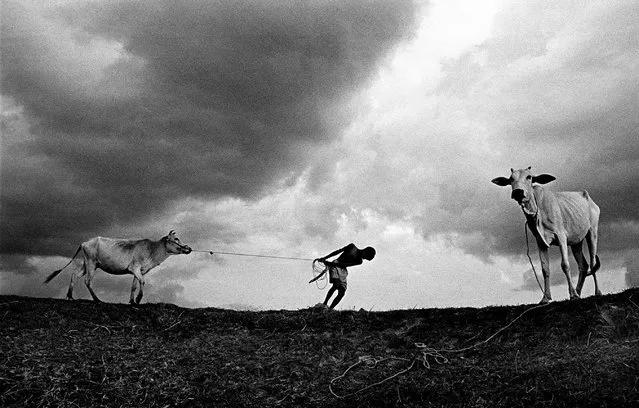
Shortlisted: Moni Sankar. This cowboy in West Bengal, India, wanted to return his pet to shelter due to bad weather, but the pet did not agree. (Photo by Moni Sankar/2016 EPOTY)
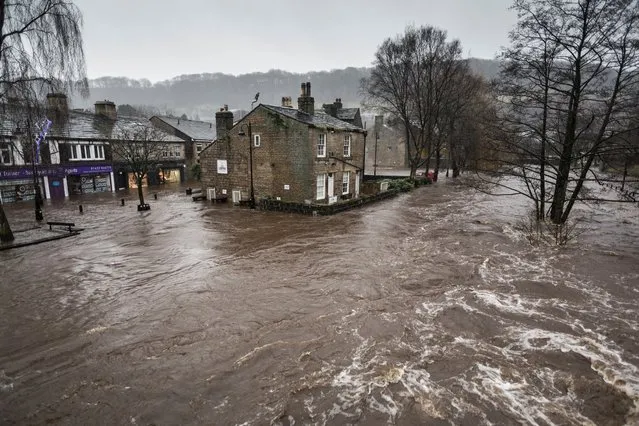
Shortlisted: Steve Morgan. On Boxing day 2015, floods came to Hebden Bridge, a thriving ex-mill town in the Calder Valley, West Yorkshire. Flood sirens echoed around the Valley at 7.30am, alerting sleeping residents to the rising waters about to engulf the town. (Photo by Steve Morgan/2016 EPOTY)

Shortlisted: Björn Vaughn. Slamet is a builder in Palangka Raya, Central Kalimantan, Indonesia. All construction work had stopped due rampant peat fires blanketing the region in a toxic smog. He casts his net into a polluted canal, hoping to make a catch. “Better a dirt fish than no fish at all!” he says. (Photo by Björn Vaughn/2016 EPOTY)
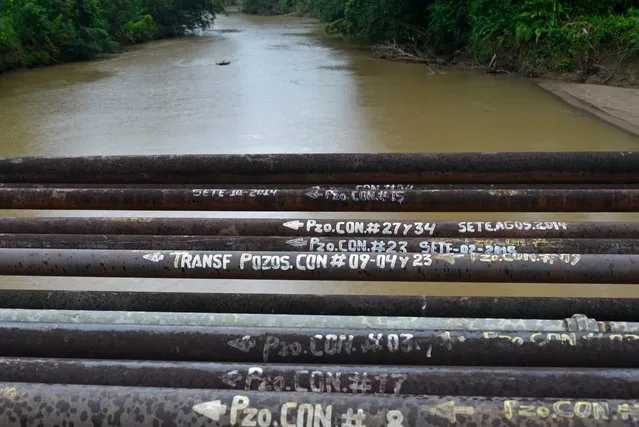
Shortlisted: Emanuele Giovagnoli. Oil pipelines run along a bridge over the Shiripuno river in the Yasuni national park. Oil pipelines run through the Ecuadorian rainforest to transport oil from pumping stations to oil developments. (Photo by Emanuele Giovagnoli/2016 EPOTY)

Shortlisted: César Rodríguez. Artemio, 50 years old, applying pesticides at the tobacco fields in Mexico. He is applying a mixture of chemicals that if absorbed by his body, would put him in danger of losing his life. Normally these chemicals are prohibited, but not in these fields. (Photo by César Rodríguez/2016 EPOTY)
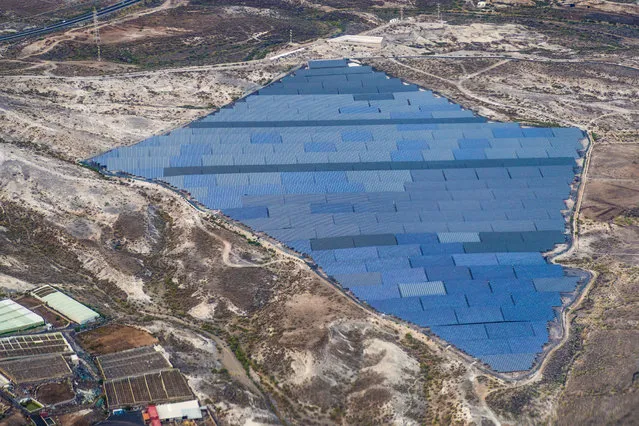
Shortlisted: Stuart Gleave. A large array of solar panels located on Tenerife’s southern coast. (Photo by Stuart Gleave/2016 EPOTY)

Shortlisted: Yuyang Liu. Two men were fishing in the pond of Xian village, in the centre of Guangzhou city, Guangdong, China, which epitomises China’s modern urbanisation. (Photo by Yuyang Liu/2016 EPOTY)
29 Jun 2016 11:02:00,
post received
0 comments
